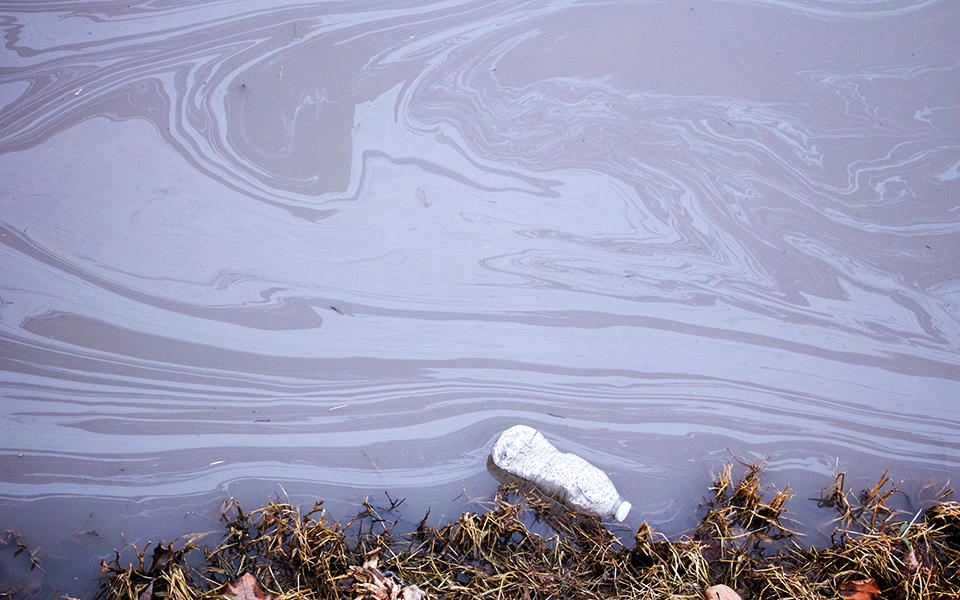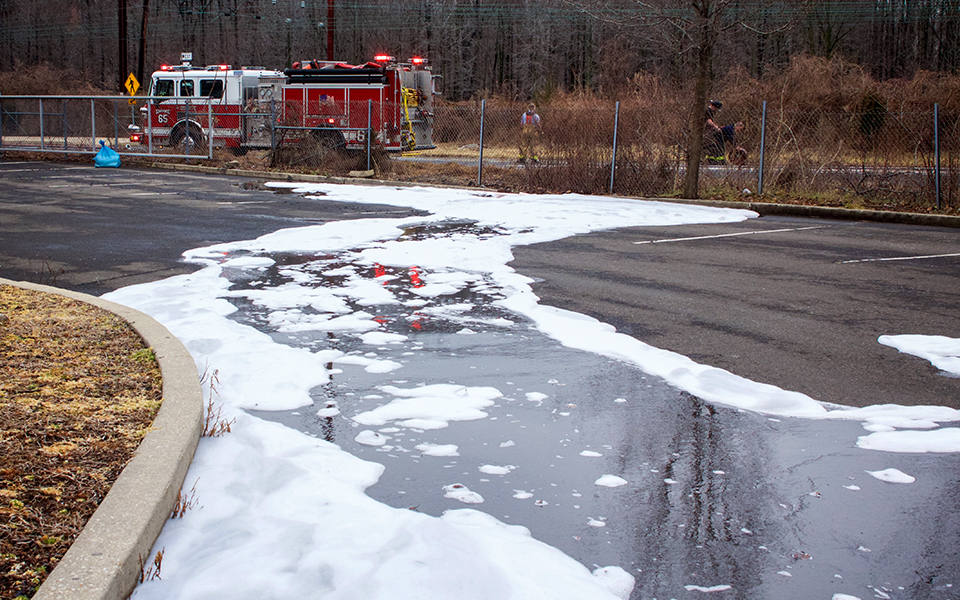Taking Measure
Just a Standard Blog
Addressing Measurement Challenges for Detecting Chemicals That Could Cause Cancer

A polluted waterway in the mid-Atlantic region.
For over 20 years, a class of man-made, potentially cancer-causing chemicals called PFAS have commonly been found in humans and the environment. These chemicals are used in a variety of industries and can be found in many consumer products such as food packaging and cleaners. Many early studies showed PFAS could even be found in remote locations like the Arctic.
There is one that I remember well in which 21 of the top PFAS researchers wrote about the measurement challenges that were hindering research. I was in graduate school at the time, and this paper really resonated with me. The authors pointed out that data for these chemicals should be accurate, precise and reproducible because it was likely this data would be used as a foundation for regulatory decisions. As I look at the current news, it seems that these regulatory decisions are now being made under the Environmental Protection Agency’s PFAS Action Plan.
When I came to the National Institute of Standards and Technology (NIST) in 2008, I wanted to address these important measurement challenges, specifically for PFAS. For six years I worked with existing standard reference materials (SRMs), products sold by NIST that support accurate and comparable measurements, such as human plasma (SRM 1950), fish tissue (SRMs 1946 and 1947) and house dust (SRM 2585), exploring the PFAS content in these materials. There was a lot of lab work that had to be done at NIST to develop precise and accurate measurements, and NIST also conducted three collaborative interlaboratory studies.
These interlaboratory studies brought together groups from industry, federal and state agencies, and academic institutions to improve methodologies for measurements of PFAS. Through these interlaboratory studies, we were able to compare all the labs’ results and help minimize measurement bias. When this initial work was completed, these SRMs helped with many of the challenges raised by the paper that got me interested in the subject to begin with. I think many of us working on the project felt we addressed most of the measurement issues, so while we knew there were likely other PFAS challenges out there, we also started exploring other chemical classes.
I started focusing on groups of chemicals that had similar measurement challenges (e.g., flame retardants and plasticizers) to PFAS. I was able to work in these new areas for a short time, about two years, but then two relatively big events happened that shifted my focus back to PFAS. The first event was the Flint, Michigan, water crisis. While the water contamination issues in Flint had nothing to do with PFAS, they did bring public awareness to the existence of toxic chemicals in drinking water. About the same time, the village of Hoosick Falls, New York, detected PFAS in its drinking water.
Shortly after these two events, I started talking with researchers and policymakers at the EPA, which included reviewing their new analysis method for measuring the chemicals in drinking water. During this time, I had discussions with the EPA and state health agencies about having NIST create a PFAS-in-water reference material. This type of NIST material would be especially important when making measurements at very low levels, like the ones measured in drinking water. We were interested in levels in the parts per trillion range, which is about half a teaspoon of chemical in the volume of 1,000 Olympic swimming pools.
Although there are no national regulatory levels yet, 23 states are at some stage of regulation of the chemicals in drinking water. With this need for accurate measurements, a NIST reference material would help commercial, regulatory and academic laboratories develop and validate their methods. I have been working with Benjamin Place, another chemist at NIST, to develop a prototype drinking water reference material that contains low levels of PFAS. We are currently testing the feasibility of the material, and after testing, we will work to make this material available for sale to manufacturers, regulators, testing companies or others who can use it to check the quality control of their measurements.

In addition to working on measurement challenges in drinking water, Benjamin Place and I have been working with the Department of Defense to address PFAS measurement challenges associated with the complex mixtures of chemicals found in aqueous film-forming foams. These foams, made to fight flammable-liquid fires, are a source of PFAS that potentially can lead to groundwater contamination. Building upon NIST’s expertise in developing reference materials, we have been working with DOD to create a reference material that would enable laboratories to accurately measure PFAS in this complex mixture.
We are in year two of this three-year project and are currently running an interlaboratory study on the four prototype reference materials. In about two months we will get feedback from the laboratories that participated in the study and should be able to assess if these materials will be useful for addressing these measurement challenges. And these are only a few of the PFAS-related measurement challenges I and others at NIST are working on.
Over the past decade, I have enjoyed working at NIST, and the NIST mission of advancing measurement science and standards is important to me. I feel that the work I do for NIST not only helps underpin measurement science in the chemical space, but it also has direct implications for human health. I know the work I have done and get to do on PFAS has had a real impact across the environmental chemistry community and will be used worldwide to help develop new chemical methods, as a quality control material, and for harmonization of international studies. And it is pretty cool knowing that the measurements and materials I have made are being used all over the world to help protect the public!






Great article. Last night my wife and I watched Dark Waters, the story of Dupont's willful hiding of cancerous PFAS in West Virginia. The movie concludes with the note that there are currently another 600 unregulated man made chemicals now embedded in the environment. The impact on humans, flora and fauna is unknown, but in the case of "teflon" Dupont paid over $600 Million in damages to people who had been adversely affected.